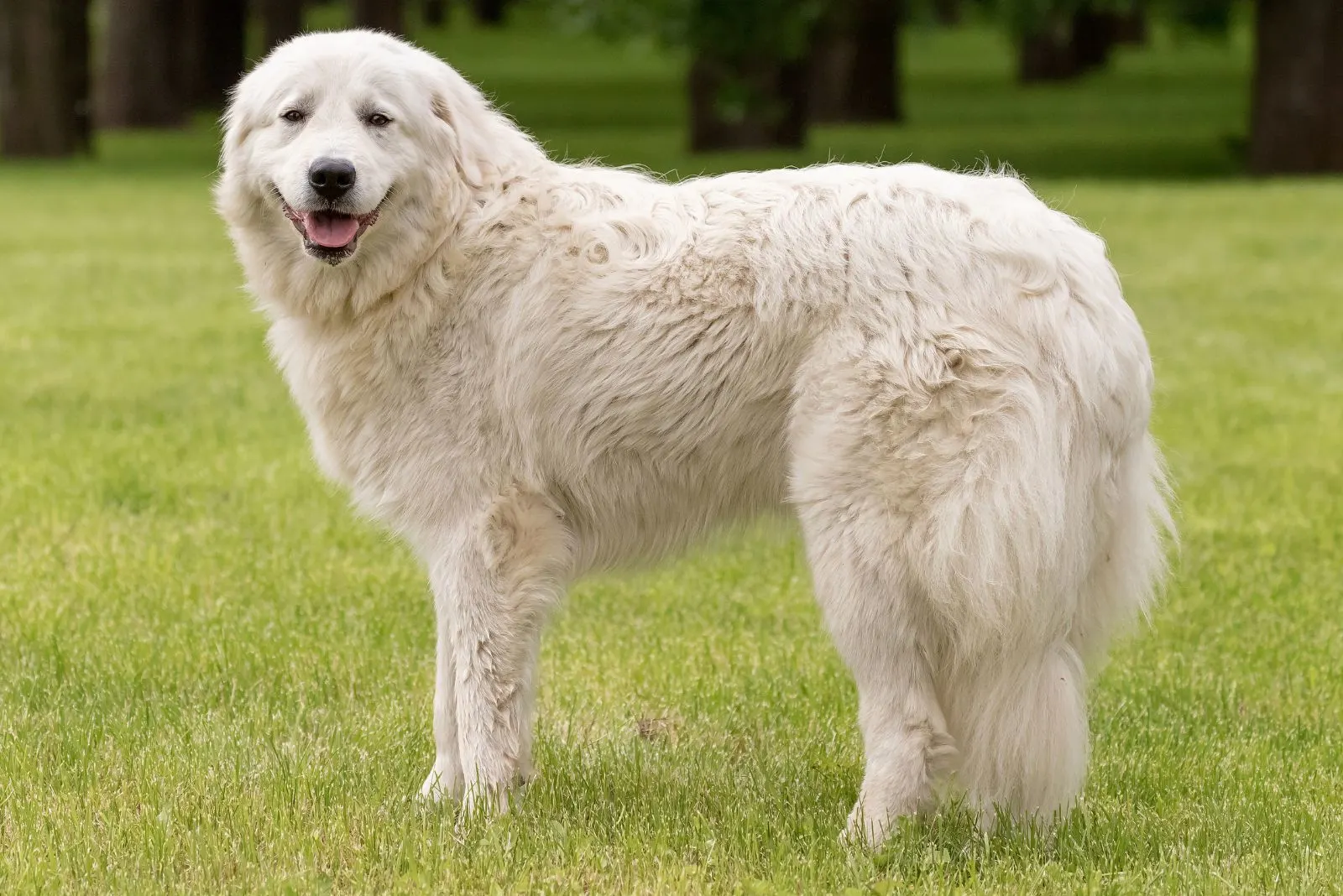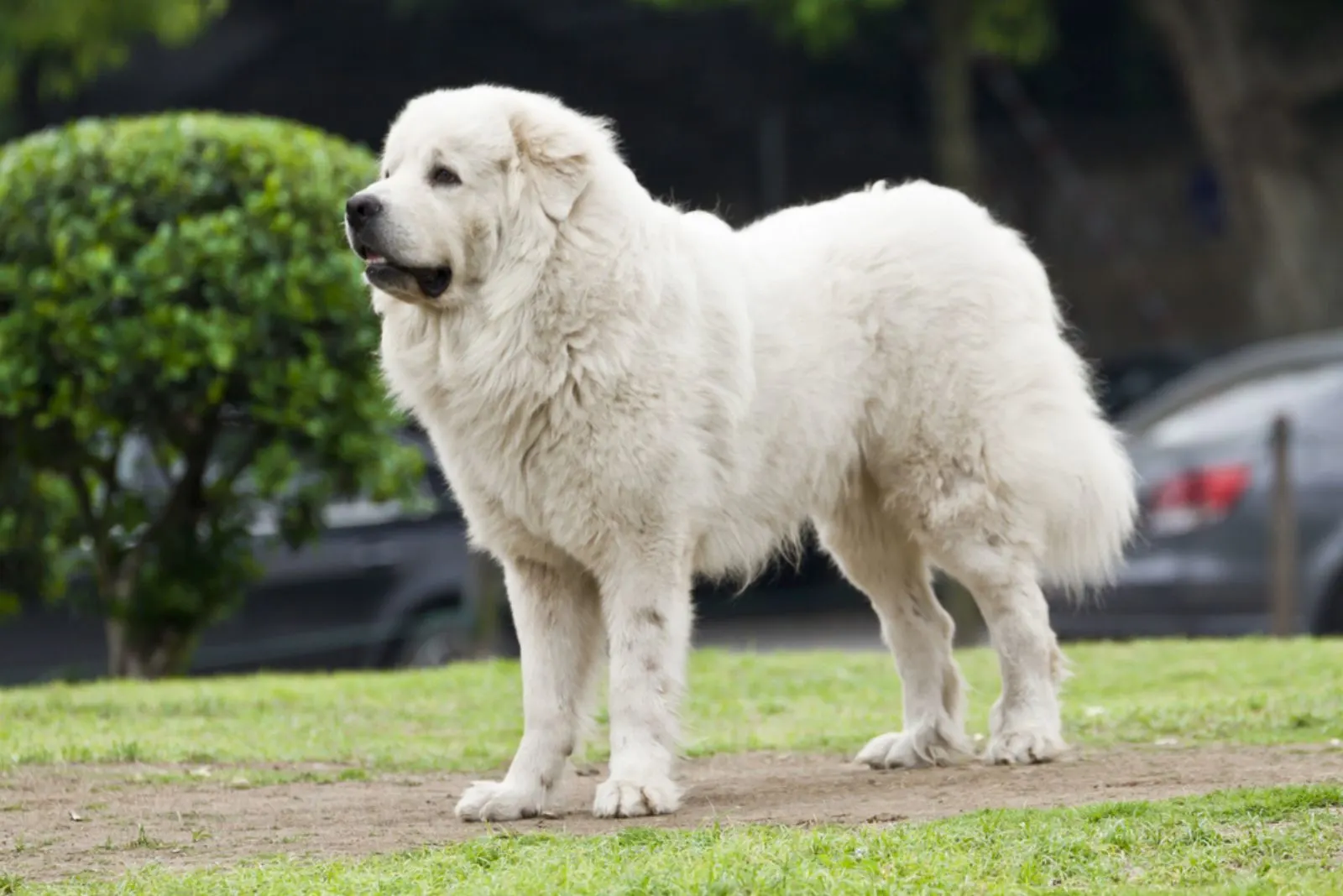A prime example is the similarity in appearance between the Great Pyrenees as well as the Maremma Sheepdog, both of which were bred as guard dogs, and have huge, dense, white fur. So, Maremma Sheepdog Vs Great Pyrenees: what are the differences?
Are the Great Pyrenees and the Maremma similar? The Great Pyrenees and the Maremma Sheepdog are entirely separate breeds.
Maremma dogs were created in Italy, but the AKC has not yet approved them. Although they are a little bit smaller, and possess a harsher coat than Pyrenees Mountain Dogs, their appearance, demeanor, and abilities are remarkably similar.
Are you attempting to choose between getting a Great Pyrenees or a Maremma Sheepdog? In order to determine which dog is best for your needs and your living, let’s examine their significant similarities and differences in more detail.
Let’s Compare Them: Maremma Sheepdog Vs Great Pyrenees
At first look, it can be challenging to distinguish between the Maremma Sheepdog and the Great Pyrenees. To facilitate a comparison, we’ve listed some of their main distinctions separately below.

Read more about: The Great Pyrenees growth chart
Maremma Sheepdog Vs Great Pyrenees Origin
The traditional sheepdog breed, known as the Maremma, originates in the Maremma province of Italy. They were initially developed to protect sheep flocks from bear and wolf attacks.
Both of these dog breeds were bred for a similar cause. Both of them were bred to be good watchdogs, and even better herding dogs.
These days, they make wonderful family pets and watchdogs. They are devoted, obedient, and kind to kids. Maremma dogs may not be the greatest choice for novice dog owners because they are also renowned for being quite independent and stubborn.
Huge, cuddly dogs like the Great Pyrenees can make wonderful family pets. They were initially developed in the Pyrenees Mountain Range to guard sheep from wild animals and other enemies.
Maremma Sheepdog Origin

Many people have told the tale of the Maremma Sheepdog, but its origins are still a matter of debate and doubt. These dogs appear to have come from Asia, along with the migrant tribes who settled in various regions of Europe and began the most primitive form of breeding.
We might believe that the progenitors of the contemporary Maremma had already reached central and southern Italy around that period, after the Greeks, given the prevalence of white guardian dog references in Latin poetry.
The modest variations between the many breeds of white guard dogs are primarily due to various climatic and geographic conditions, as well as selection, but they nevertheless share some fundamental psycho-physical characteristics.
The Pyrenees Mountain Dog is found in France, as are the Kuvatch, the Tatra, and the Chuvack in Hungary, Romania, and the Czech Republic, among others.
The Maremma Sheepdog has been referenced by early Italian writers, and a 13th-century painting depicting a Maremma may be found in Florence’s Santa Maria church.
The initial stock originated from emigrating Eastern Shepherd dogs, which later evolved into distinct breeds unique to a single location, such as the French Pyrennean Sheepdog as well as the Hungarian Kuvasz.
According to flock movements over the changing seasons, the shorter-coated Maremmano as well as the longer-backed Abruzzese in Italy eventually fused into a single breed.
The Maremma continues to be the most widespread and well-liked sheepdog in Italy nowadays. It is reported that the intrepid Maremma will fend against predators and human enemies. The first Maremma to be exported to England was “Drago of Castelnuovo” in 1931.
The Great Pyrenees Dog Origin

The breed most likely developed from a population of mostly white highland livestock guard dogs that were first domesticated in Asia Minor nine or ten thousand years ago.
It is extremely likely that these big white canines traveled to the Pyrenees Mountains around 3000 BC with their domesticated sheep and shepherds. There, they came into contact with the local natives, among whom were the Basques, who were descended from Cro-Magnon Man.
The breed evolved the features that set it apart from the broad group of livestock guardian dogs as well as the predominantly white members of such a group throughout these millennia amid the seclusion of the Pyrenees Mountains.
The Great Pyrenees is indeed a breed of dog used by highland shepherds. The Great Pyrenees formed a unique bond with the shepherds, their household, and the sheep over this extended period.
French records from 1407 describe how helpful these “Great Dogs of the Mountains” were in protecting the Chateau of Lourdes. The Dauphin in the royal court of Louis XIV designated them as the Royal Canine of France in 1675, and as a result, nobility started to highly prize them.
Each dog was valued at the equivalent of two men because of their sharp eyesight and sense of smell, which made them essential as shepherds, companions, and castle guards.
When not tending to the flocks, “Patou,” as he is affectionately known, can be seen lounging on the mat at the entranceway of the shepherds’ modest homes.
The Great Pyrenees received official approval from the American Kennel Club in February 1933, and from April 1933 on, the breed started receiving its own division in authorized events.
The Great Pyrenees now serves as a working dog in addition to a pet and a household dog. The majority of our dogs never step foot in a dog show; however, they are cherished and trusted family pets that sometimes serve as livestock guardians on ranches and farmlands.
Maremma Sheepdog Vs Great Pyrenees: Who Is The Bigger Boy
Without putting the Maremma Sheepdog and the Great Pyrenees side by side and carefully comparing them, it’s unlikely that you could determine which breed is larger.
Only a few inches separate these two, and all those that defy typical size restrictions may actually be of identical size.
However, based on that average measurement, the Great Pyrenees is a few inches larger than the Maremma Sheepdog. The tiniest Maremma Sheepdog measures 23 inches whereas the typical Great Pyrenees reaches 25 inches at the shoulder area.
Whenever it concerns weight, the gap is significantly more obvious because the obviously heavier Great Pyrenees weighs 50 lbs more than the Maremma Sheepdog. That discrepancy is equivalent to a tiny hay bale.



Leave a Reply